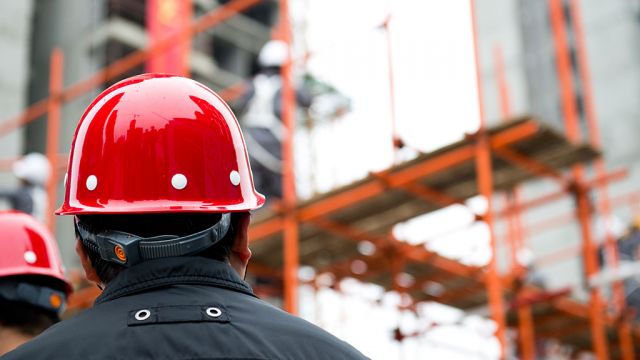From the Griffin Masonry family to yours, we hope everyone has wonderful and joy filled Christmas and New Year celebrations among family and friends. We are looking forward to another fantastic year in 2017!


From the Griffin Masonry family to yours, we hope everyone has wonderful and joy filled Christmas and New Year celebrations among family and friends. We are looking forward to another fantastic year in 2017!

Christmas is just around the corner and what better gift than one you can enjoy every day all year round! Outdoor living areas are an extension of home and should be built with your ideal style and features in mind. A fire pit, an outdoor kitchen, added privacy, and landscape features are just a few examples of what can be done to enhance your backyard. Brick, concrete, and stone have all become interchangeable materials that can be used alone or together for a beautiful effect.
By Zach Everett

There are many reasons why workplace safety inspections are essential. Safety inspections prevent injuries, illnesses, and deaths on the job. Let’s discuss how inspections prevent injuries and also several other things accomplished by jobsite safety inspections.
Inspecting a project for safety deficiencies, but more importantly hazards, helps establish what is called a hazard analysis. With that information, you’re able to make decisions on what is needed on the job, such as personal protective equipment, tools, equipment and training, to name a few.
Some of the questions you should ask are:
By having an intimate understanding of the job and its processes, we are able to better identify the hazards associated with our individual tasks and then how to protect ourselves from those hazards so that we may go home healthy.
Besides the most important reason of keeping our people safe from injuries, illnesses and death, there are other reasons to perform jobsite safety inspections. One is so that we can listen to the concerns of our workforce. When we’re out in the field, we can see them in action and can talk to them and understand what they’re dealing with, which will better equip us to give them what they need to accomplish the job safely. We may be able to find underlying reasons why hazards present themselves or why employees are having behavioral problems with safety. For example, someone may be having a hard time at home; a marital conflict or problems with kids may be affecting his state of mind on the job. Inspecting the jobsite also gives us an opportunity to re-evaluate our safety program. Perhaps by the inspection, we will see lagging indicators and violations, which tell us that we need to step up our written program or safety program in general.
Let’s address a few more issues concerning a safety inspection.
A safety person would be at the top of the list to carry out this inspection, but he/she is not the only one who can do it. A corporate safety director, any safety manager who works under him, general superintendents, project managers, and basically anyone who is knowledgeable of safety and goes on the job should be responsible for performing a safety inspection while there. Whether that inspection translates into a written report or not is up to the owner of the company and the safety director.
I am a fan of any written safety report. Even if a project manager or a general superintendent is performing the inspection, I believe it is well worth the time to generate at least a brief written report of the observations. Having a paper trail recording the observations and any corrections made is worth a great deal in a court room, for example.
The frequency of inspections is contingent on what is being inspected. Scaffolding, for example, must be inspected before each shift and before employees can be released to work from the scaffold. Concerning a more general safety inspection of the job, the site superintendent should do a daily inspection, and an inspection whenever a new hazard is introduced into the employees’ tasks. Project managers, safety personnel and similar individuals are not given specific regulations by OSHA, but I believe they should do an inspection each time they go to a project site. This helps to comply with OSHA standards, such as re-evaluating the safety program; but most importantly, it can stop unsafe acts and conditions that could result in injuries or worse.
Any time a violation is observed, it needs to be stopped and corrected. Some employees may require disciplinary action, some may not. Each situation should be evaluated on its own merits. It may be a training issue or supervision issue.
All safety-related observations should be recorded, as well as the corrections made. There are many existing safety inspection checklists that can be utilized, or you could create your own or choose from several smartphone apps. The bottom line is that safety inspections are an essential part of a safety program. Most importantly, they save lives!